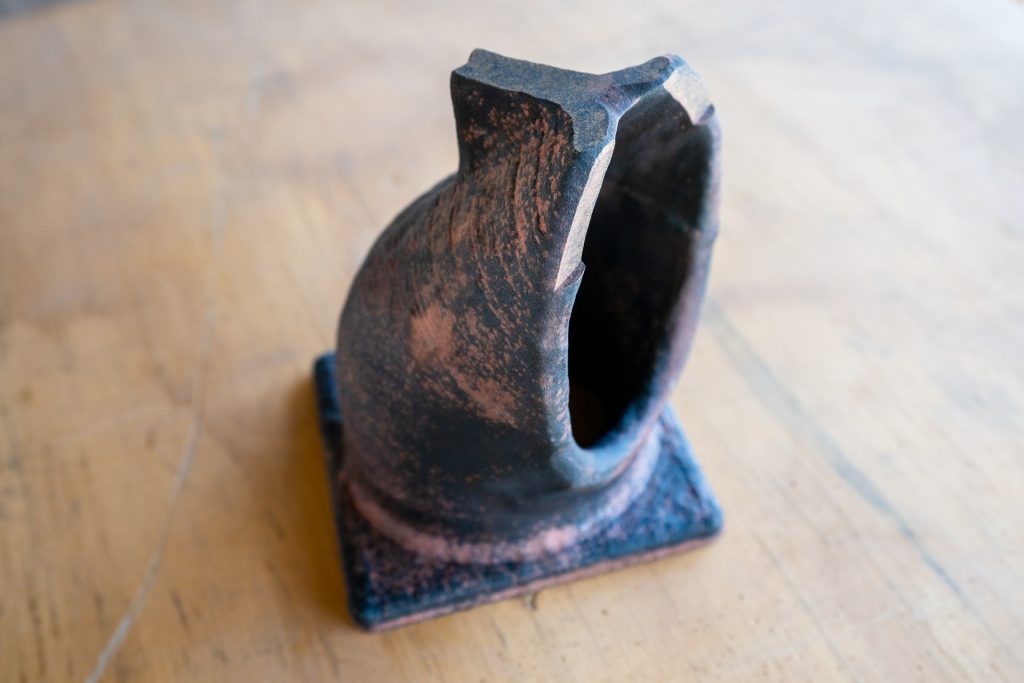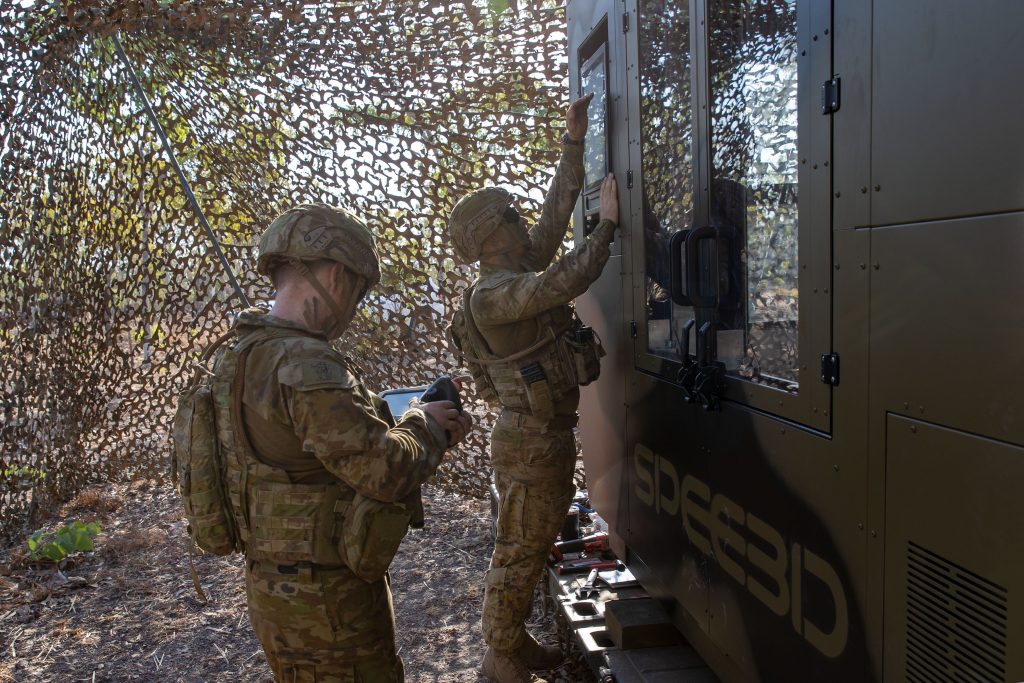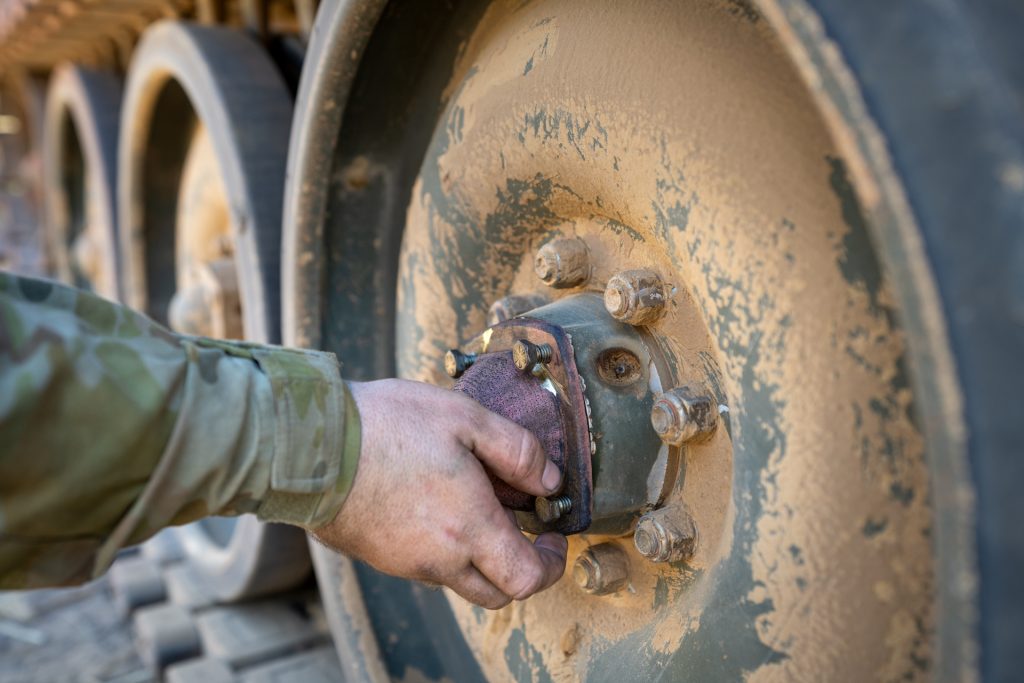The Australian Army has conducted its latest set of field tests using metal 3D printing technology developed by SPEE3D.
Following the success of several 3D printing trials last year, the latest tests were conducted as part of Exercise Koolendong, an annual military exercise between the Australian Army and the Marine Rotational Force – Darwin. Performed in remote bushland in the Northern Territory, the field tests involved 3D printing and replacing a number of spare parts for the M113 Armored Personnel Carrier using the company’s WarpSPEE3D Tactile 3D printer.
According to SPEE3D, this was one of the system’s toughest tribulations yet, taking place in extreme heat and dusty conditions over the course of three weeks. The WarpSPEE3D was also transported more than 1,200km over rough terrain in a bid to test its ruggedness out in the field.
Byron Kennedy, CEO of SPEE3D, said, “This is a great example of how expeditionary Metal 3D Printing can improve Defence readiness. Field trials conducted in 2020 proved SPEE3D technology was deployable. This year’s trial extension was bigger, longer, and more remote, making it the worlds’ toughest and longest metal 3D printing trial so far.”

SPEE3D’s cold spray 3D printing technology
SPEE3D specializes in cold spray technology, a form of 3D printing that involves spraying a metal powder onto a substrate at high speeds. The process doesn’t rely on lasers or any other heat-based energy sources, leveraging the power of kinetic energy instead.
The WarpSPEE3D, in particular, jets metal powder out using a compressed gas stream, giving the feedstock enough velocity to deform and fuse with the substrate upon impact. It’s capable of printing large metal parts up to 40kg in mass, at rapid speeds of up to 100 grams/minute.
The Australian Army has been trying to integrate additive manufacturing into its sustainment efforts for some time now, with initial plans and strategies dating back to 2014. Owing to its Australian background, SPEE3D was eventually chosen to work with the Australian Army and Royal Australian Navy to make on-demand 3D printing possible for the Australian Defence Force.
The 2020 trials were reportedly a world-first when it came to testing the feasibility of metal 3D printing both in the barracks and in the field. They were extended to 2021 to verify the initially successful results.

The 2021 field test
This year, SPEE3D has been working to help train the Australian Army’s first set of military Additive Manufacturing Cell (AMC) technicians. The plan is to produce a workforce specializing in the design, printing, machining, heat treatments, and certification of metal 3D printed parts out in the field.
As part of the latest trial, the AMC technicians were tasked with producing several different replacement components for the M113 Armored Personnel Carrier. This included an exhaust pipe and a 2kg wheel bearing cover – a part that often sustains significant damage as a result of rough terrain and trees. The team was able to 3D print a replacement cover in just 29 minutes for less than $100, and integrate it into the vehicle after a successful certification procedure.
The Australian Army now intends to explore the 3D printing, upgrade, and repair of more field-ready components with the aim of taking defense readiness to new heights.

Additive manufacturing’s defense applications go beyond just vehicle maintenance, however, with more and more advanced projects being commenced around the world. The US Marine Corps recently leveraged 3D printing to aid their mine-clearing missions, having printed a headcap for a rocket motor used to detonate an M58 Mine Clearing Line Charge (MICLIC). 3D printing the headcap enabled the marines to overcome the costly and time-inefficient drawbacks of traditional manufacturing techniques.
Elsewhere, software developer General Lattice was recently awarded a contract by the US Army to improve the impact absorption of the Army’s combat helmet using 3D printing and advanced lattice geometries. The R&D project is currently underway and will see the firm develop a predictive modeling toolset to design and generate high-performance lattice structures for use in helmets.
Subscribe to the 3D Printing Industry newsletter for the latest news in additive manufacturing. You can also stay connected by following us on Twitter, liking us on Facebook, and tuning into the 3D Printing Industry YouTube Channel.
Looking for a career in additive manufacturing? Visit 3D Printing Jobs for a selection of roles in the industry.
Featured image shows a 3D printed wheel bearing cover installed on the M113. Photo via SPEE3D.



